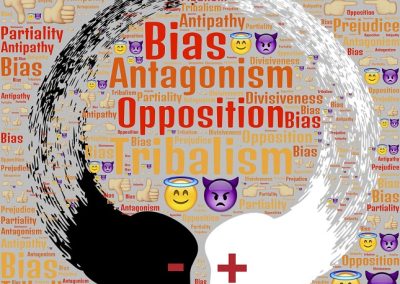We can recognise lots of emotions by analysing paraverbal and non-verbal communication, and even detect lies
Dictionaries state a lie is the conscious and deliberate alteration, denial or concealment of truth. A liar knows what he/she is doing, and implements all possible tactics to be believed, for instance creating a good story, detailing it as much as possible, and carefully calculating the storytelling.
But there is something that is quite difficult to manage: if you want a lie to be successful, you ought to control the emotion it generates. Except for pathological liars and born actors, most people cannot perfectly control paraverbal (the voice) and non-verbal language (facial expressions, body and gestures), specifically when their lie ignite an intense emotion like anger or panic, when they highly fear to be proven wrong, when they feel guilty about their deception or even the idea of being a liar.
The American phycologist Paul Ekman has been studying the relationship between face expressions and emotions since the 1970s. Considering very few people can put on a true ‘poker face’ (meaning a totally blank face) in real life, Ekman examined and compared hundreds of different scenarios, from marital couples to doctor-patient conversations, from police inquiries to political and business affairs.
We often say that, if someone touches the nose during a conversation, he/she is probably hiding something. Ekman’s research proves that voice, body and gestures can be trained quite easily, so they are not such reliable as lie clues. Even when we detect the voice turning shrill, a more frequent tic, or the increase of the so-called handling gestures (ie. turn a ring around the finger, roll up the hair, bite cuticles, etc.), we can assume something is wrong with our counterpart, but we can’t decide he/she is lying.
Since in daily life we can’t measure somatic alterations due to nervous systems reactions to intense emotions (ie. quickened breathing, sweating, flushing, pupil dilation, etc.), Ekman suggests to carefully look at face expressions, as they convey lots of information by blending voluntary and accidental mime. If on one hand the face supports the liar in his/her deceptive effort, on the other hand it tells the truth by showing at least a part of the liar’s genuine emotions.
Contrary to popular belief, eyes are not the sole and best reflection of one’s soul, and there isn’t a 100% proven face expression for honesty. According to Paul Ekman, authentic emotions can be recognized from micro expressions, that are full facial mimes lasting less than a quarter second. When we manage to get one, we can be reasonable sure to have understood the genuine feeling of our counterpart. Forced expressions, that can possibly reveal a lie, tend to be asymmetric or more visible in a certain face area, do last over time and are usually uncoupled from words and gestures.
How can we recognize a fake smile? Ekman would advise that an untrustworthy smile only deals with lips and the bottom of the face, it doesn’t involve cheeks and eyes, and it doesn’t lower eyebrows. It is more asymmetrical than a genuine smile, it disappears too quickly and is not synchronized with the ongoing conversation.
But the interpretation of behaviours and face expressions needs to be cautious, as most of them don’t have a single, univocal reason. We all have individual expressive patterns, to be considered to correctly manage some clues, and the evaluation could be influenced if the observer has a preconceived idea about the suspected, or if the environment interferes. The analysis of paraverbal and non-verbal communication alone can lead to false positive (truth interpreted as lie) or false negative (lie interpreted as truth) cases.
Nobody wants to repeat Othello’s mistake. In Shakespeare’s tragedy, he kills his wife Desdemona because he believes her grief to come from her lover’s death, while the truth is, she is desperate since she can’t persuade her husband about her innocence. It’s wise to always use more than one research technique, comparing results to avoid barking up the wrong tree.




